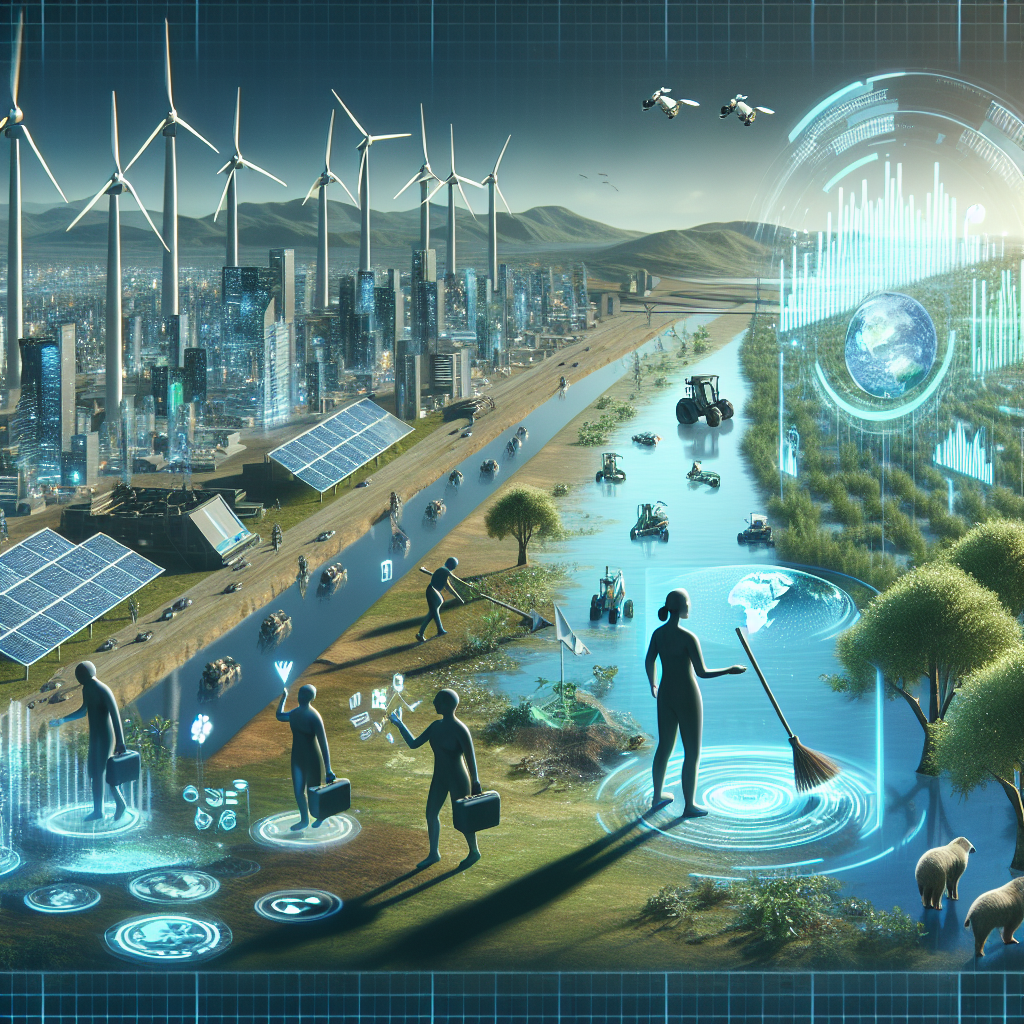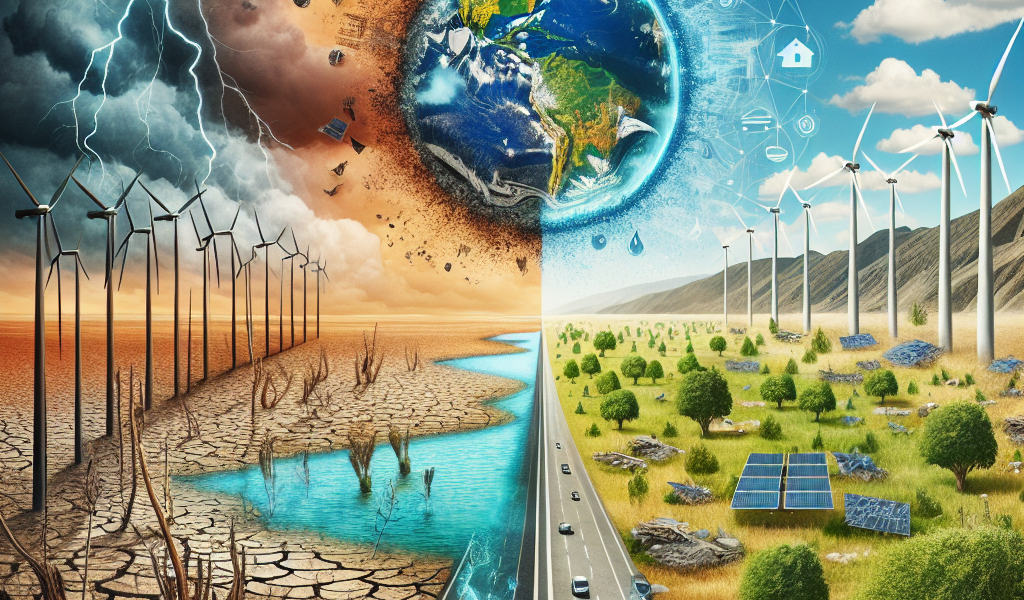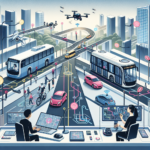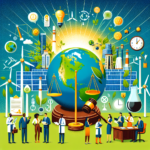-
Table of Contents
“Tech for Tomorrow: Innovating for a Cooler Climate”
Introduction

The role of technology in addressing climate change is pivotal as it offers innovative solutions to reduce greenhouse gas emissions, enhance energy efficiency, and promote sustainable practices across various sectors. Technological advancements are crucial in transitioning to renewable energy sources, improving energy storage, and developing smart infrastructure. Additionally, technology plays a key role in climate monitoring and data analysis, enabling better prediction and management of climate impacts. As the effects of climate change become increasingly severe, leveraging technology is essential for mitigation and adaptation strategies, ultimately aiming to achieve global sustainability goals and reduce the environmental footprint of human activities.
Innovations in Renewable Energy Technologies
The Role of Tech in Addressing Climate Change
In the face of escalating climate change, the role of technology, particularly in the realm of renewable energy, has never been more critical. Innovations in this sector are not just additions to the grid; they are essential lifelines steering us towards a more sustainable and hopeful future. As the planet grapples with rising temperatures, unpredictable weather patterns, and increasing levels of greenhouse gases, the push for renewable energy technologies is both a necessity and a beacon of progress.
Solar power, once a fringe player in the energy game, has transformed dramatically. Today, advancements in photovoltaic cell efficiency and the advent of solar tiles that integrate seamlessly into existing building structures exemplify how far this technology has come. These innovations not only harness the sun’s power more effectively but also ensure that solar energy is more aesthetically pleasing and easier to adopt in urban environments, where space is at a premium.
Transitioning from the sun to the wind, another segment of renewable technologies is making significant strides. Offshore wind farms, for instance, are a testament to how engineering ingenuity is harnessing nature’s power. These massive structures, located out at sea where the wind is stronger and more consistent, are contributing an ever-increasing amount of electricity to national grids. The development of floating wind turbines is particularly promising, as they can be deployed in deeper waters, vastly increasing the potential locations for wind farms and thereby the potential electricity generated.
Hydropower, an older but crucial part of the renewable portfolio, is also experiencing technological revolutions. Innovations in turbine design have made it possible to install hydropower plants in previously unsuitable locations, such as small rivers or streams with minimal environmental disruption. Moreover, the integration of AI to optimize water flow and energy production is maximizing efficiency, ensuring that even the oldest forms of renewable energy can keep pace with modern demands.
The synergy between renewable energy technologies and the burgeoning field of energy storage is perhaps one of the most exciting developments. Energy storage systems are crucial for stabilizing the power supply, managing peak loads, and ensuring a steady energy flow, regardless of weather conditions. Innovations like lithium-ion batteries, which are becoming more efficient and less expensive, and alternative storage solutions like pumped hydro storage or compressed air energy storage, are pivotal. These technologies store excess energy generated during peak production times and make it available when needed, smoothing out the inconsistencies inherent in renewable energy sources.
Moreover, the digitalization of energy systems through smart grids is enhancing the efficiency of renewables. Smart grids use digital communications technology to detect and react to local changes in usage, improving the efficiency of electricity distribution. This not only helps in reducing energy waste but also aids in integrating more renewable sources into the system, facilitating a more resilient and flexible energy network.
As we continue to innovate and implement these technologies, the path to a sustainable future becomes clearer. Each advancement not only represents a step forward in fighting climate change but also symbolizes a commitment to preserving our planet for future generations. The role of technology in this fight is indispensable, and as these innovations continue to evolve and proliferate, they offer a hopeful glimpse into a renewable-powered world.
The Impact of Artificial Intelligence on Carbon Footprint Reduction
The Role of Tech in Addressing Climate Change
In the urgent quest to combat climate change, technology, particularly artificial intelligence (AI), is emerging as a formidable ally. With its ability to analyze vast datasets and predict outcomes, AI is at the forefront of innovative strategies aimed at reducing carbon footprints and fostering a more sustainable future.
AI’s role in environmental sustainability is multifaceted, ranging from optimizing energy use in industrial processes to enhancing the efficiency of renewable energy systems. For instance, AI algorithms can predict the demand for electricity more accurately, enabling energy systems to adjust their output accordingly. This not only reduces energy waste but also decreases reliance on fossil fuels, which are major contributors to greenhouse gas emissions.
Moreover, AI is revolutionizing the transportation sector, a significant source of global carbon emissions. Through advanced algorithms, AI enhances route planning for shipping and logistics, potentially reducing the distance traveled and, consequently, the fuel consumed. Similarly, in the automotive industry, AI-driven technologies are integral to the development of electric and autonomous vehicles, promising cleaner, smarter, and more efficient modes of transportation.
In agriculture, another critical area for carbon management, AI is helping to create more sustainable practices. Smart farming techniques, which utilize AI to monitor crop health and soil conditions, can lead to more precise use of water and fertilizers, reducing waste and environmental impact. These innovations not only help in cutting down the carbon footprint of agricultural activities but also improve yield and farmer income, demonstrating the dual benefits of environmental and economic sustainability.
AI’s impact extends to the corporate world, where it aids companies in tracking and reducing their carbon emissions. By integrating AI with other technologies like the Internet of Things (IoT), businesses can achieve more comprehensive energy management solutions. These systems can automatically adjust lighting, heating, and cooling in real-time based on occupancy and weather conditions, leading to significant reductions in energy consumption.
Despite these promising developments, the deployment of AI in the fight against climate change is not without challenges. The creation and operation of AI systems themselves consume considerable amounts of energy. Therefore, it is crucial that the energy used for these technologies is sourced from renewable energies to truly mitigate their overall carbon footprint. Additionally, there is the issue of ensuring that AI technologies are accessible to all parts of the world, including developing countries, which may not have the infrastructure to support such advanced technologies but are often the most vulnerable to the effects of climate change.
As we move forward, the synergy between AI and renewable energy sources appears to be a critical area for development. Innovations such as using AI to better forecast the availability of solar and wind energy can optimize the use of these intermittent energy sources. The more precisely these forecasts can be made, the more effectively these resources can be integrated into the power grid, enhancing the reliability and efficiency of renewable energy.
In conclusion, while AI presents a powerful tool for reducing global carbon emissions and advancing environmental sustainability, its success hinges on thoughtful integration, widespread accessibility, and continuous advancements in renewable energy technologies. As the world grapples with the escalating impacts of climate change, harnessing the full potential of AI in a responsible and equitable manner remains a paramount challenge and a significant opportunity.
Smart Cities and Sustainable Urban Development
The Role of Tech in Addressing Climate Change
In the face of escalating climate challenges, technology emerges as a beacon of hope, particularly within the realm of smart cities and sustainable urban development. As urban areas continue to swell, accommodating over half of the global population, the imperative to integrate sustainability into the urban fabric becomes increasingly urgent. Smart cities, leveraging the latest technological innovations, are at the forefront of this transformation, aiming to reduce environmental footprints and enhance the quality of life.
The concept of smart cities is rooted in the use of Information and Communication Technology (ICT) to enhance the efficiency and services of urban infrastructures such as transportation, energy, and waste management. This integration plays a pivotal role in making cities more adaptive and resilient to environmental stresses. For instance, smart grids, a hallmark of smart cities, utilize real-time data to optimize the distribution and consumption of energy. This not only leads to significant reductions in energy use but also curtails greenhouse gas emissions, directly confronting one of the primary drivers of climate change.
Moreover, the advent of IoT (Internet of Things) has propelled the capabilities of smart cities to new heights. Sensors deployed across cities collect vast amounts of data on everything from air quality to traffic patterns. This data is then analyzed to inform decisions that lead to more sustainable urban living. For example, IoT-enabled traffic management systems adjust signals and routes in real time, easing traffic congestion and reducing vehicle emissions. Similarly, smart waste management systems ensure efficient trash collection and recycling processes, minimizing waste and its consequent environmental impact.
Transitioning from waste to water, smart technologies also address the critical issue of water conservation. Smart water meters and leak detection systems help identify and rectify leaks much faster than traditional methods, ensuring precious water resources are not wasted. In an era where water scarcity affects nearly two billion people globally, such innovations are not just beneficial; they are essential.
The role of technology in urban development extends beyond infrastructure. It also fosters a new culture of sustainability among city dwellers. Apps that track energy and water usage, for example, empower residents to make more informed decisions about their consumption habits. Community sharing platforms reduce the need for ownership of infrequently used products, decreasing the demand for new goods and the resultant environmental strain.
However, the transition to smart cities is not without challenges. Issues of privacy, data security, and the digital divide pose significant hurdles. Moreover, the upfront costs associated with implementing these technologies can be prohibitive for less affluent cities. Despite these obstacles, the potential benefits of smart cities in combating climate change and promoting sustainability are too significant to ignore.
As we move forward, it is crucial that both public and private sectors invest in these technologies. Collaboration across disciplines and borders can help refine these systems, making them more accessible and effective. The fight against climate change will be long and arduous, but with the aid of technology in smart cities, there is a clear pathway toward a more sustainable and resilient future. In this journey, every step taken is a step towards not just innovation, but survival.
Conclusion
The role of technology in addressing climate change is pivotal and multifaceted, offering both innovative solutions and necessary tools to mitigate and adapt to environmental challenges. Technologies such as renewable energy systems, energy-efficient appliances, electric vehicles, and advanced agricultural techniques reduce greenhouse gas emissions and resource consumption. Additionally, data analytics, artificial intelligence, and remote sensing enable more effective monitoring, modeling, and management of environmental conditions, enhancing our ability to predict climate events and assess the impact of various interventions. However, the deployment of these technologies must be accompanied by policy support, financial investment, and societal acceptance to fully realize their potential in combating climate change. Thus, while technology is a crucial component in the fight against climate change, its effectiveness is contingent upon integrated efforts across governmental, industrial, and community sectors.





